This time around for the Architects Roundtable we have, Andy Staples (@buildsmartrgolf), Mike DeVries (@DeVriesDesigns), Kris Spence (@kspdesign) and Brett Hochstein (@hochsteindesign) join to discuss golf course architecture topics in a two part edition.
If you could see the PGA Tour play an event on one course that currently isn’t a host what would it be and why?
Andy Staples: To be honest, my first reaction to this question is I’d love to see Tom Doak take a crack at testing a tour player. Of the courses I’ve seen of his, I don’t know if they are set up for the Tour, but I have a feeling, given a chance, he would instigate some good conversation around design.
The course I know can host a tournament because it has is Cypress Point. I think of all the courses in the world that would capture the interest of the general public via the big screen, and educate them on golf course architecture; this would be it. It’s such a spectacular form of artistry, strategy, and scenic beauty, even if it’s seen by some as the greatest 17 hole golf course (I enjoy the 18th hole, by the way).
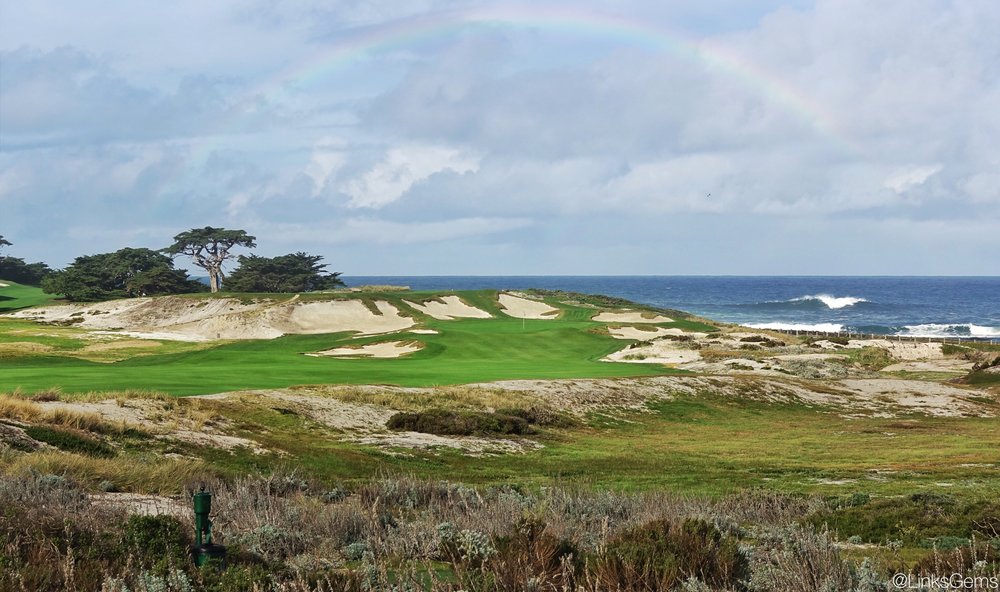
The 14th at Cypress Point Club - Photo Credit: Jon Cavalier @linksgems
Brett Hochstein: This question was more difficult to answer than I had expected. My initial thoughts were that they could easily improve most of their current options, but then I thought more about how much of a different game the pros play. Sadly, it wouldn’t necessarily be that much more fun to watch them hit a short pitch shot into every green at an interesting place like Kirtland as opposed to doing the same at Firestone.
What I really want to see out of tour events is the full showcase of players’ skills. Contrary to what it might seem, they can actually do more than hit laser straight 320 yard drives and spin a wedge to two feet. They can work the ball when they need to, controlling how much it moves right or left or how high or low they want to hit it. I find that their touch and creativity around the greens is rarely tested and showcased at the current venues.
I think protracer technology offers an excellent opportunity to showcase these skills. If they have to hit a sweeping draw to get a shot close on a sharp left to right sloping green, protracer allows the viewer at home to see it. In the old days those vision, creativity, and skills would have just looked like a regular shot.
So what do we need?
We need ground contours that play firm. We also need a proper length. This doesn’t mean that it has to be a minimum of 7400 yards. It means that the key design features need to be engaging and in play. It might call for bumping the tees forward and losing par on a certain hole.
Here’s an example: there is a hole of 480 yards that has a prominent feature (hazard, hill, valley, etc.) at 420 yards. This feature comes into play and makes the average player think about their second shot. If they get by or around this feature, it could feed onto the green or at least leave a short easy pitch. For the modern professional, this feature is relatively meaningless. After a 300 yard drive, they will be hitting a lofted iron into the green with little regard for the feature.
In this situation, the natural instinct would be to try and find land to get another 100 yards on the hole and “bring the feature back into play.” Excising the practical difficulties and expenses of this, you still might not even end up long enough to make the feature relevant for a significant number of players.
The best and easiest solution might be to forget about the par of the hole and re-engage the feature. A simple bump of the tees the other way to make it 360. Now they have to think about taking on this feature on their tee shot with the reward of setting up an easy birdie or better. Who cares if this encounter comes on the first or second shot—the important part is that the encounter is happening.
I don’t have a specific recommendation because messing with tees and yardages to achieve what I’ve described above is an entirely different and unique exercise. Tournament officials using more creativity setting up an event would yield a more exciting and interesting tournament.
Otherwise, to answer the question more traditionally I would say Ballyneal or Sand Hills. Pine Valley, National, or Chicago Golf Club would be fun as well. Maybe we just need to establish a hickory open for the PGA with a special type of ball. That would open the door to all sorts of fun venue possibilities. I think it would also just be a lot of fun in itself and garner a lot of attention. Rotate the venue and promote it as the informal “6th Major.”
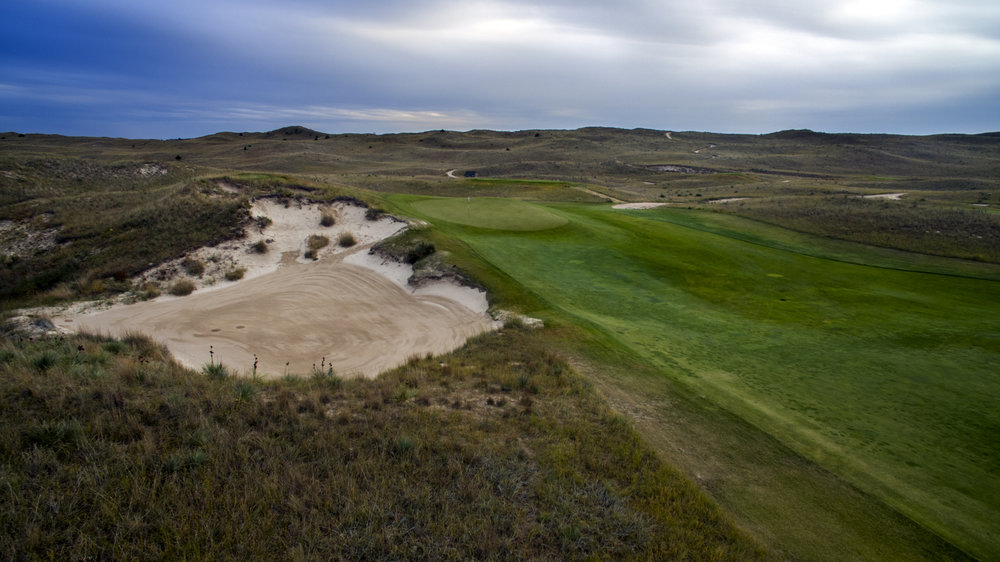
The 4th at Sand Hills Golf Club
Mike DeVries: Cypress Point Club. I remember watching The Crosby Pro-Am as a kid and getting a glimpse of CPC on Saturday’s telecast following one of the stars on 15-17. Wow, was that cool! Especially on 16, when the amateur would make it onto the green over a churning, foaming ocean. Besides the views, the great thing about Cypress Point is there is so much to see and talk about on the golf course. Players would have a multitude of options and different shots to play/try throughout the round. The routing takes you through dunes, forests, and oceanfront cliffside holes. It demonstrates how diverse the site is and the challenges it presents to pros and amateurs alike. Obviously, the setting is gorgeous, but it’s a course that has it all and could contribute to educating golfers about stellar golf design.
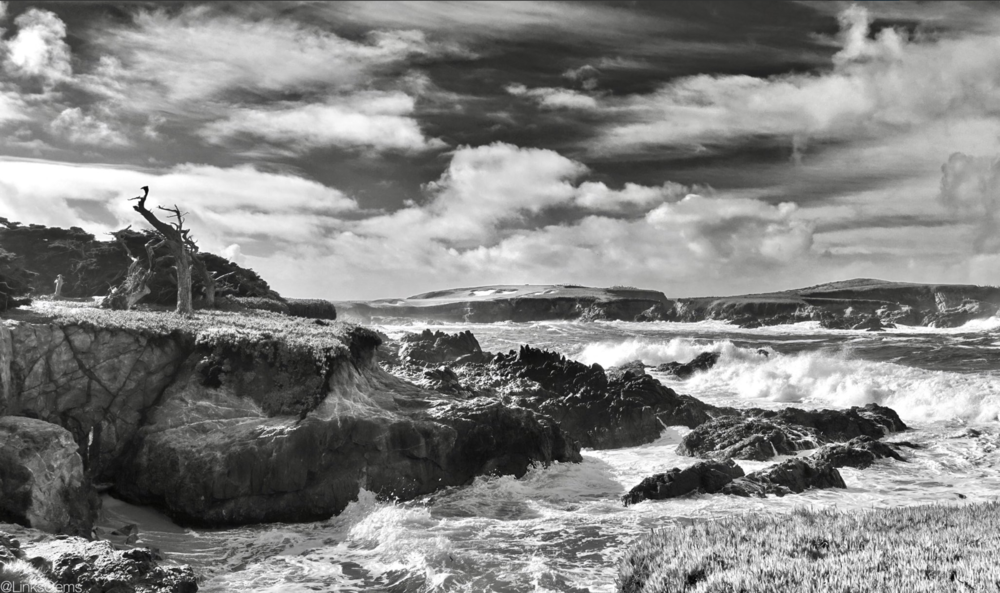
The 16th at Cypress Point - Photo Credit: Jon Cavalier @linksgems
Kris Spence: I tune into the tour more often when they are playing at a venue with architectural character. An example is Riviera which makes the world’s best think and play creatively. Another course that I could see stimulating thought and creativity is Holston Hills in Knoxville, Tennessee. The architecture is off the charts. Its design has great variety and width as well as some unique holes and spectacular green complexes. My one concern is if it has enough length to handle the distance the ball travels today, but I think it would hold up well at the right time of year and with the right setup. The course would have to play firm and fast with some breeze to force players to make decisions and find some uncomfortable positions.
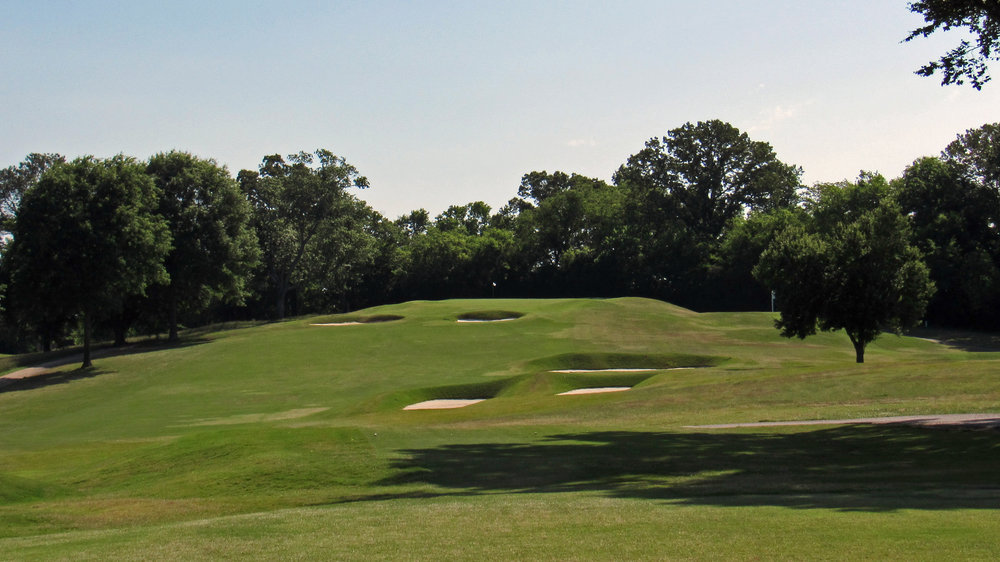
The 16th at Holston Hills
What is one thing that you wish the average golfer understood about golf course architecture?
Staples: This is a bit of a boring answer, but I wish more golfers understood more about teeing grounds and how they are laid out. As golf architects, we locate tees in places that are meant to give the player a different experience, or a different angle, and not just purely for length. Most regular golfers only look at total yardage from a particular tee and measure themselves by their brawn, or by difficulty (also sometimes by height). This mentality misses the point of golf architecture, in my opinion. I love being able to play a par 5 that one day I can reach the green in two, or, based on a longer tee, it now becomes a true three-shot hole. Nothing beats playing a par 3 where one day you hit a rescue club, the next day, you hit an 8-iron. When I play my courses with others that are there for the first time, I almost always go to a variety of tees that I feel are most exciting or strategic. They rarely end up being the same tee on the card.
DeVries: Hazards are not there to punish the golfer; they are there to make you think about your strategy. Well-placed hazards elicit many emotions and reactions among golfers, but the most engaged golfers think their way around hazards. A well-placed bunker or creek will challenge golfers to get close to them for a better angle or an easier second shot. Unfortunately, the average golfer looks at them only as a penalty. I hope that they can start to think of hazards as interest in the field of play and as an element of the landscape that visually enhances the experience and challenges their ability.
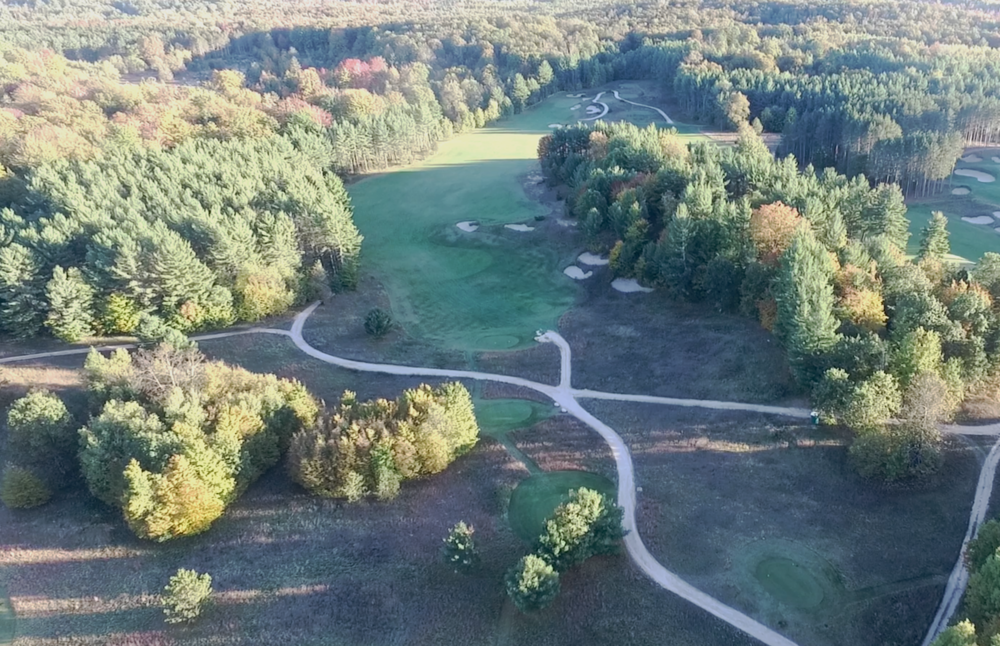
Challenging the par-5 14th's fairway bunkers yields the return of a shorter approach shot and kicker slope at the Mike DeVries designed Kingsley Club
Spence: I wish they understood that architects “speak” to them through the placement of hazards, angles, elevation changes, etc. This is especially true with classically trained architects. On every hole, the architect is suggesting shots, shapes and specific positions that gain advantages or expand the shot variety offered. Many golfers don’t pay enough attention on the tee to certain subtle aspects of design. Things such as the hole location, angle of the green, the slope of the fairway or the preferred line can provide opportunities where astute golfers can take advantage.
Donald Ross often tested players’ attention to the detail within his design. For example; he would entice or allow the player to take an indirect line (the long way home) with width away from bunkers or hazards. Usually, this line would result in a worse angle into the green, while the preferred line to approach the green was near bunkers or hazards. If you take a Ross drawing and draw a straight line from tee to green, you will see his bunkers, mounds and other hazards almost always touch or cross this line. Unfortunately, very few modern-day architects practiced this approach and philosophy in their work.
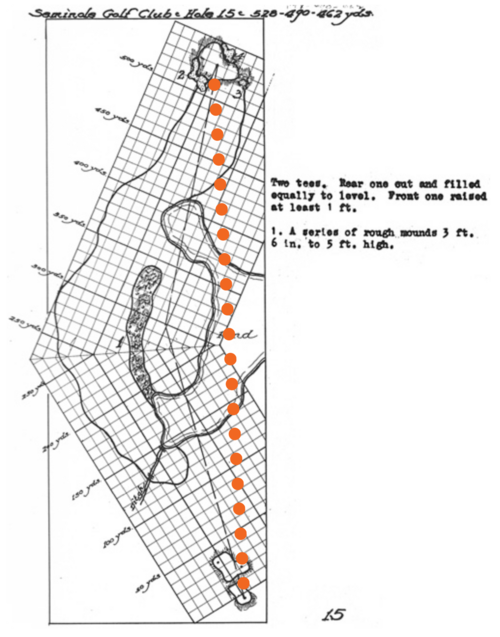
An example of Ross' bunkering which cuts through the straight line of play
Hochstein: The ground game, especially with regard to the American version of golf. There are many reasons the ground game is ignored on this side of “The Pond,” the first being our naturally hotter and wetter climate make it harder to grow the favorable fine-leafed grasses like fescue. There is also a fascination with grass that is a lush green color, and endless amounts of resources are spent to achieve that color. The greener and softer playing grasses led to a whole litany of courses designed to only challenge the aerial game. Thus, we have a golfing culture that is missing half the picture, a half that I would argue is the most interesting and enjoyable part of the game.
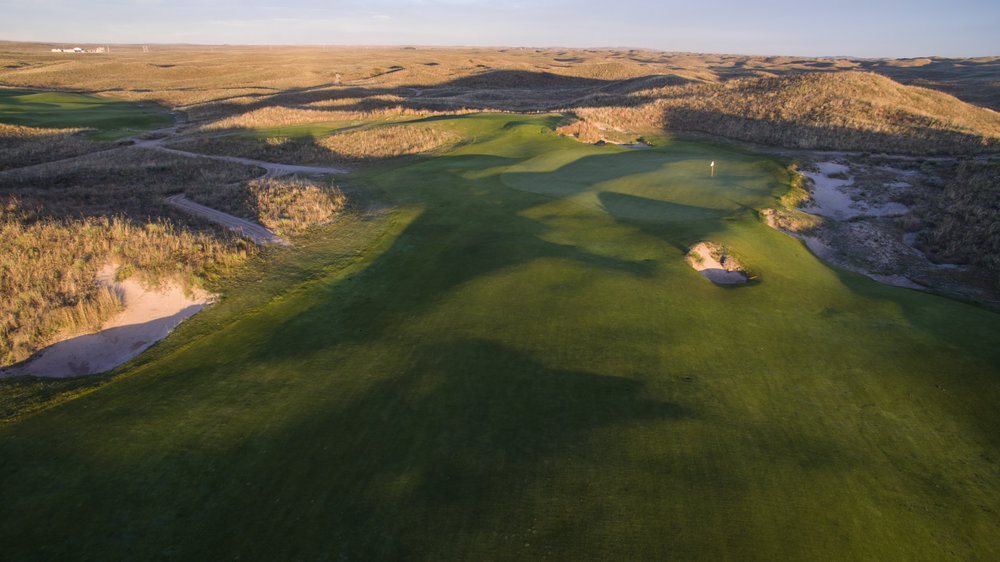
The unique ground contours of Ballyneal's 12th hole.
There is a quote in Alister MacKenzie’s Spirit of St. Andrews that immediately came to mind regarding ground and aerial shots.
“There is a great fascination in playing a shot with a maximum of topspin and seeing one’s ball climbing over hillocks, through hollows, curving right to left, or left to right, and finally lying dead at the hole. There is a feeling of suspense in wondering whether it is going to climb the last rise, followed by a feeling of intense relief when it just makes it and rolls down the final slope toward the hole.”
He goes on to contrast that with an aerial shot…
“There is nothing like [of] the same excitement in watching the flight of a ball through the air. Then it is only the result which gives the satisfaction. The manner in which a shot is played is a greater lasting pleasure.”
Besides just the simple difference of thrill, the ground game also forces a greater amount of interaction with the golf course features, from slopes to hazards well short of a green or target. I’ve often heard about Donald Ross placing “visual trick” bunkers short of greens as a form of deception to mess with your distance judgment. They may occasionally achieve such deception, but that element is really more just a coincidental byproduct from the true intent of the hazard, which is to guard approach shots. With the older equipment and lesser maintenance standards that favored the ground game, approach shots would need to skirt just over or around those bunkers to find the putting surface. With a longer ball and softer conditions, there is no need to come close to these bunkers now. That to me is disappointing and makes for a much less interesting shot and hole.
It takes both design and maintenance to give the golfer these options, but the golfer also needs to see it and adjust their style of play. By utilizing slopes and run up shots, a player will not only likely lower their scores, they will have a much more fun time doing it.


 by
by 
